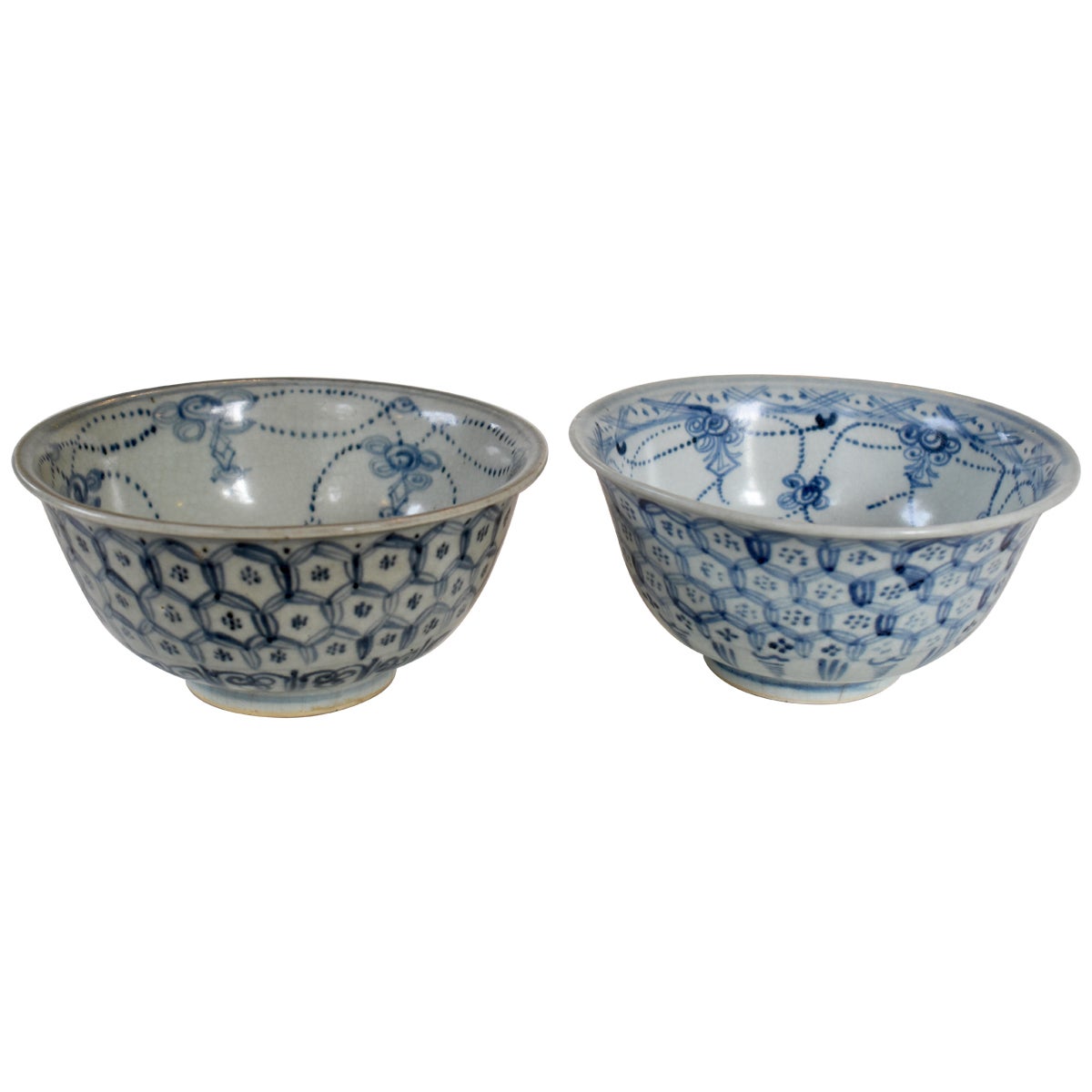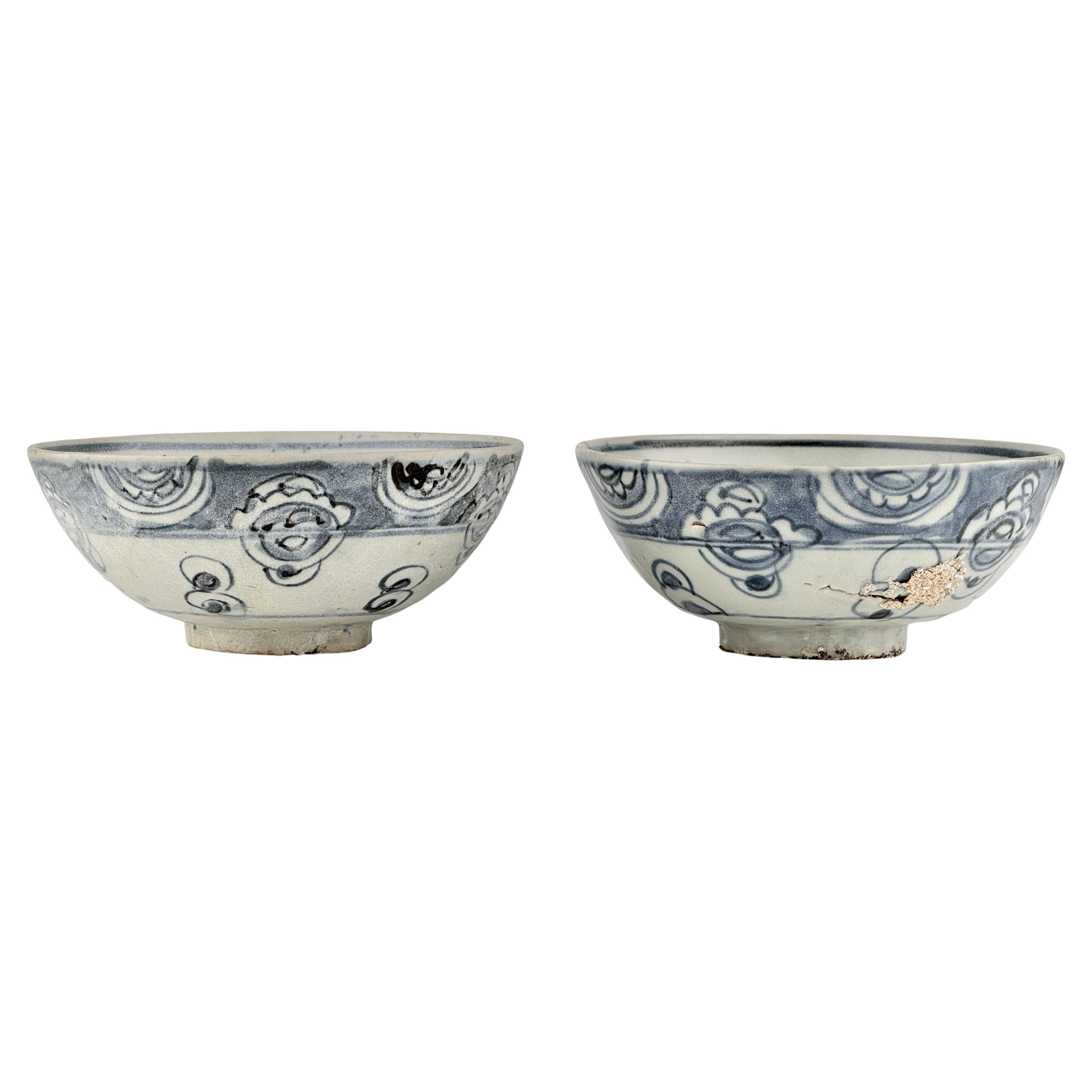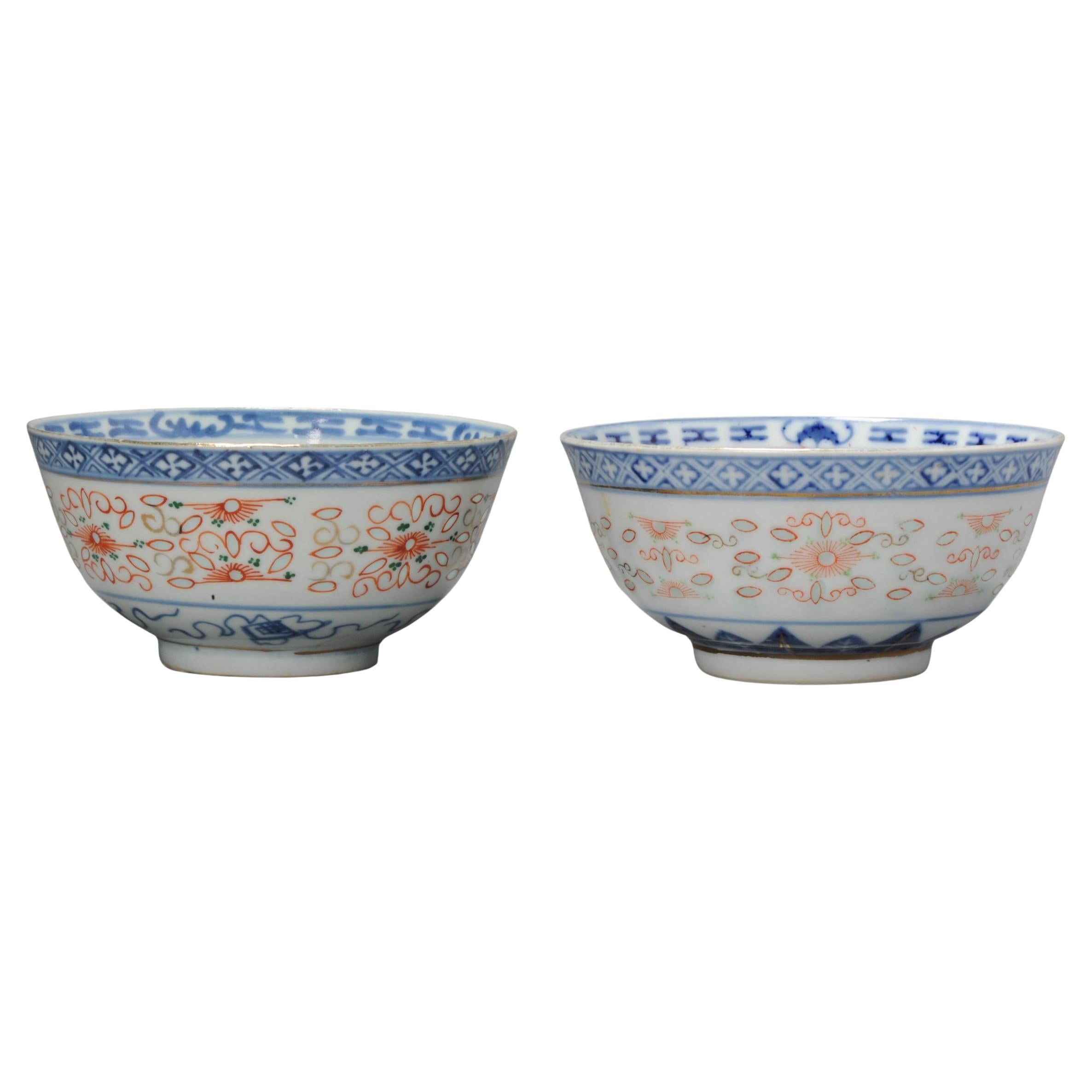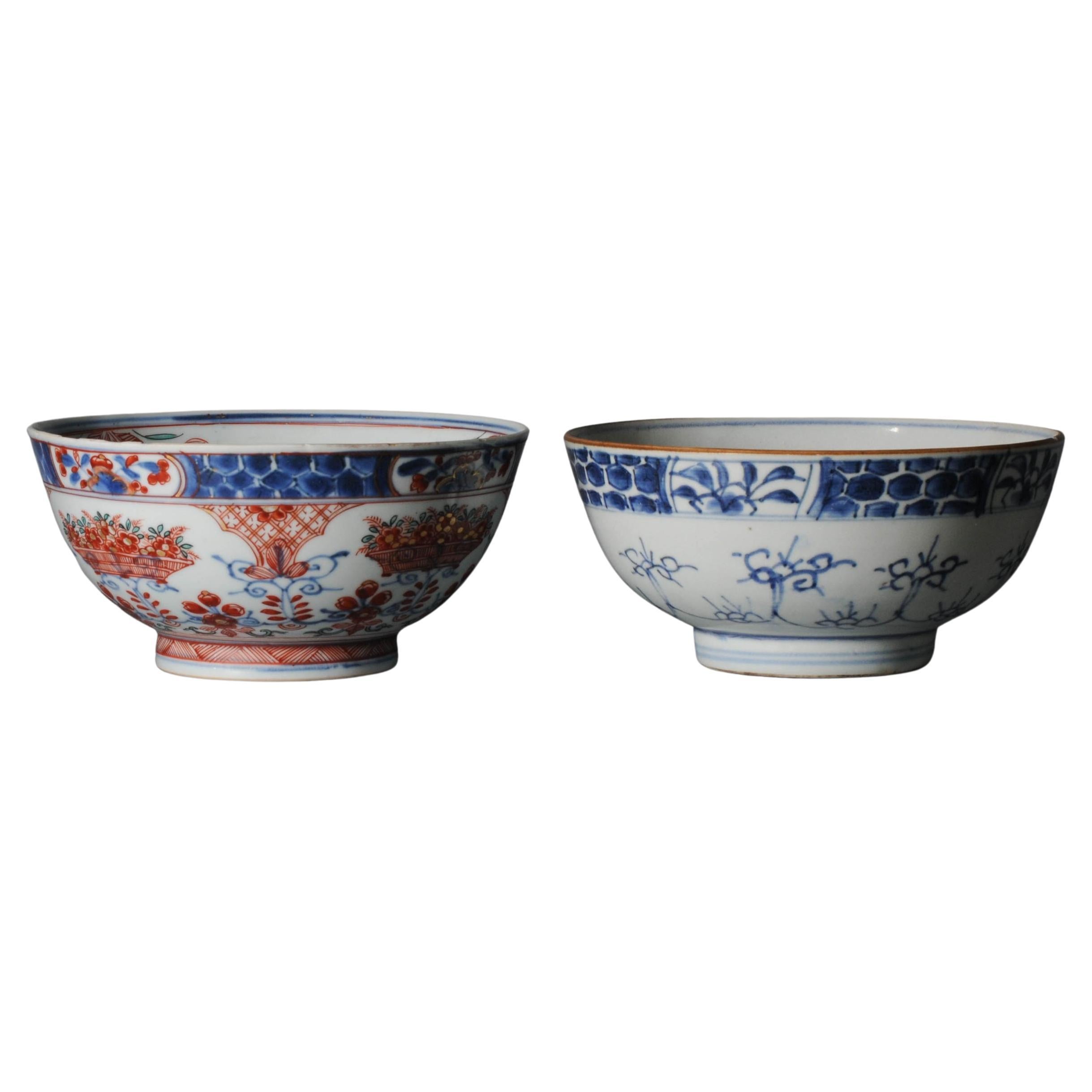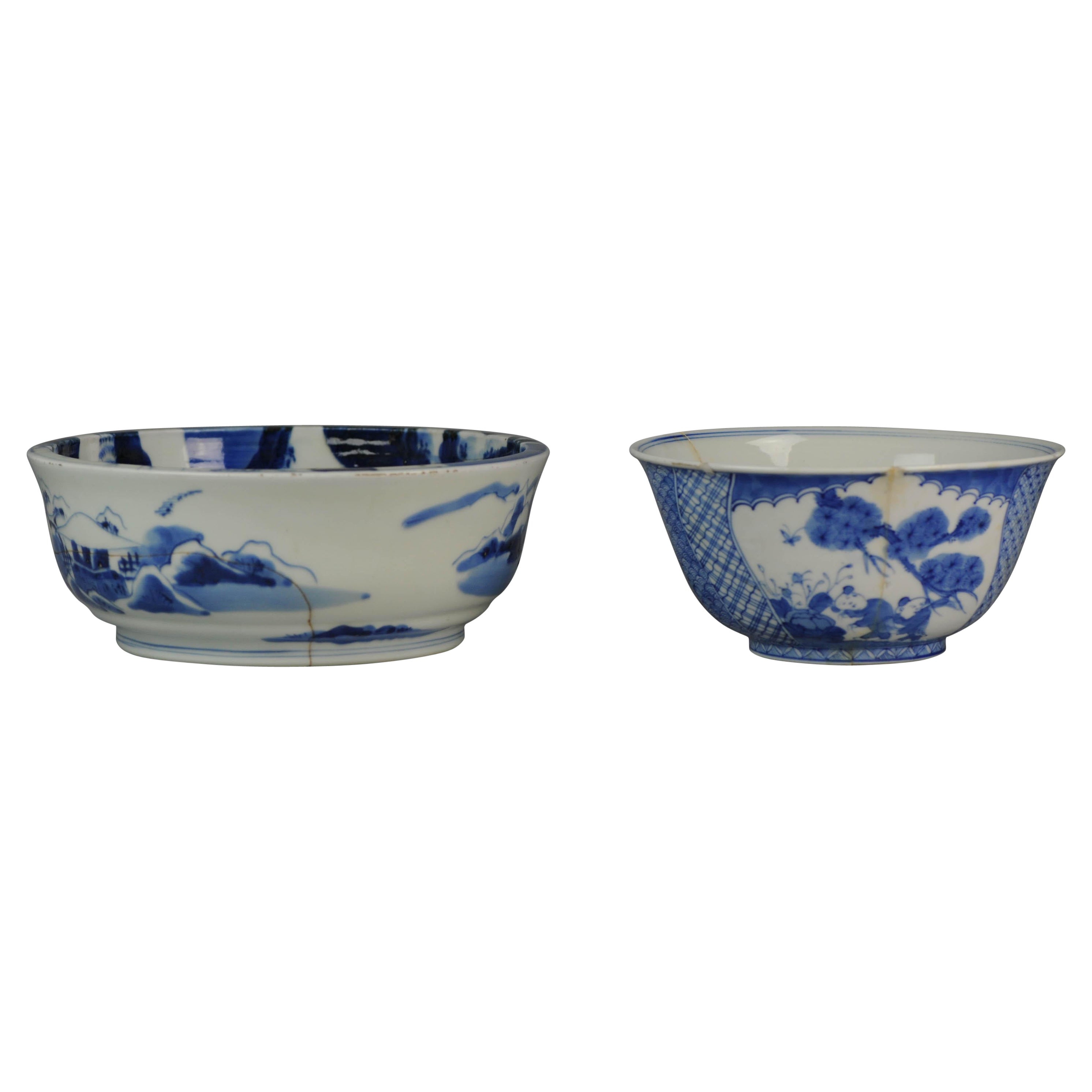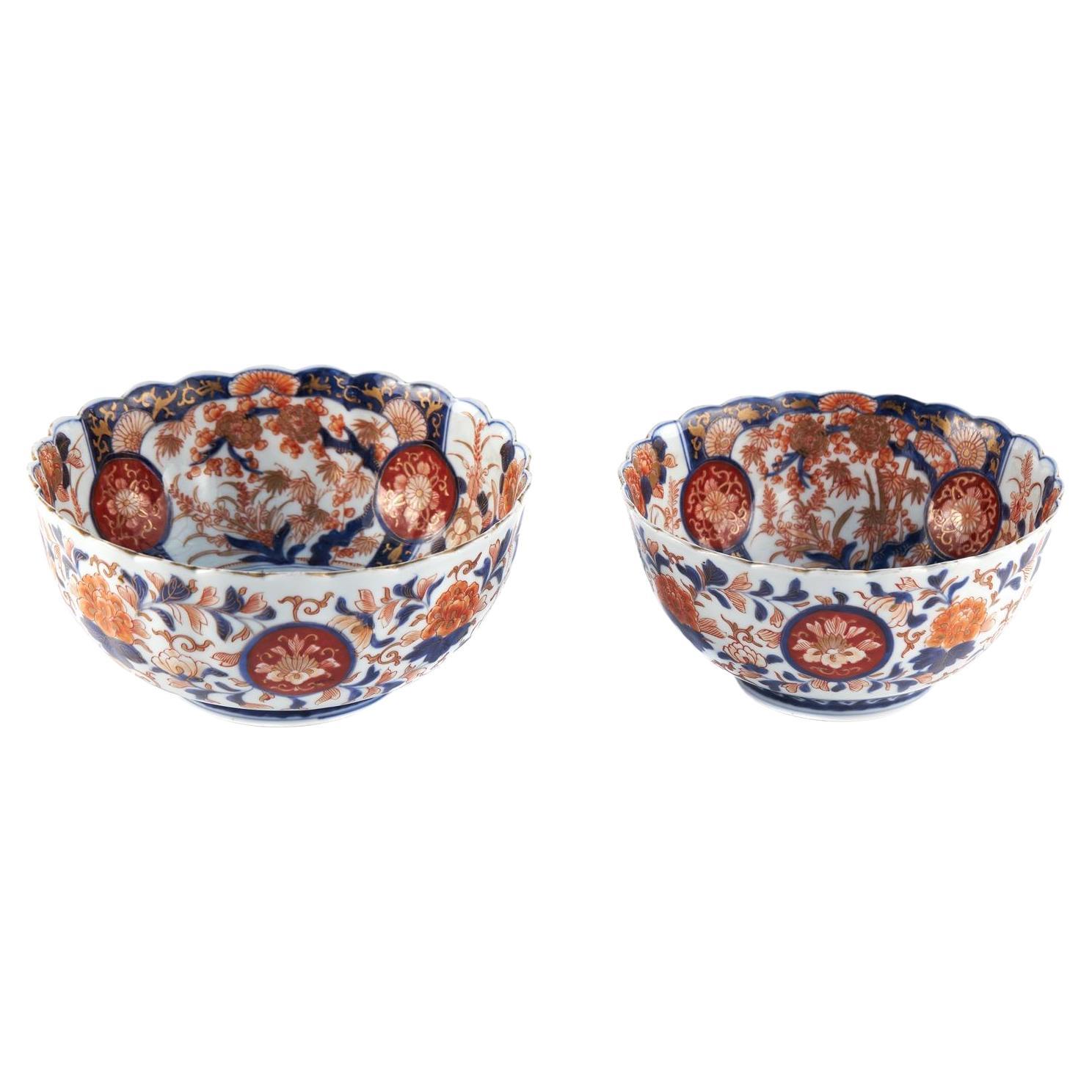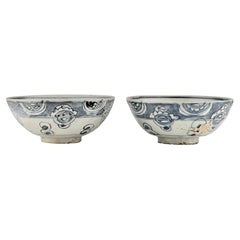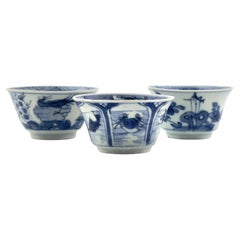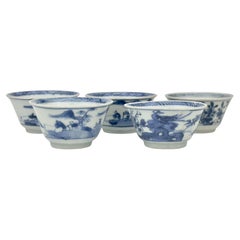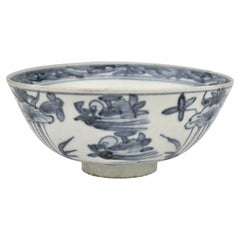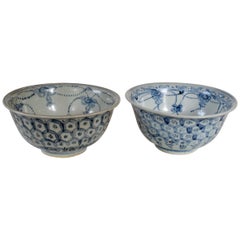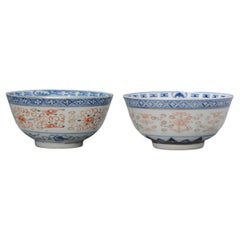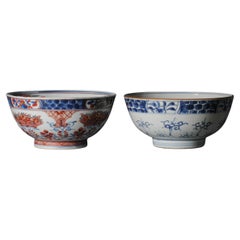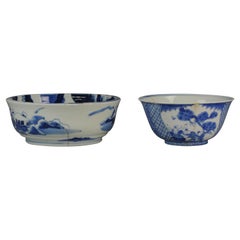Items Similar to Two Bowls with knot shaped design on inside, Ming Era(15th century)
Want more images or videos?
Request additional images or videos from the seller
1 of 14
Two Bowls with knot shaped design on inside, Ming Era(15th century)
$2,800
£2,134.43
€2,438.42
CA$3,939.99
A$4,315.52
CHF 2,272.12
MX$51,504.25
NOK 28,956.13
SEK 26,470.26
DKK 18,221.57
About the Item
Two Bowls from the Ming dynasty cargo. A piece identical pattern is included on page 119 of the title 'The Age of Discovery: Asian Ceramics Found Along the Maritime Silk Road'.
Period: Ming Dynasty (15th century)
Type: Bowl
Medium : Blue and White
Size : Left - 7cm(Height), 15cm(Diameter) / Right - 7cm(Height), 14cm(Diameter)
Condition : Good
Provenance : From the shipwrecked ming dynasty cargo
Reference :
1) Asian Ceramic Found along Maritime Silk Route by The National Museum of Vietnamese History - p.119
* Knot Design
The knot motif, known as the "endless knot" or "eternal knot," is a traditional design that originated from Buddhist symbolism, which was highly influential in China during the Ming dynasty (1368-1644). This design represents the interconnectedness of all things, the cyclical nature of life, and the idea of eternity and longevity. It is meant to symbolize good luck, prosperity, and a harmonious flow of auspicious energies.
- Dimensions:Height: 2.76 in (7 cm)Diameter: 5.91 in (15 cm)
- Style:Ming (Of the Period)
- Materials and Techniques:
- Place of Origin:
- Period:
- Date of Manufacture:15th century
- Condition:Minor fading.
- Seller Location:seoul, KR
- Reference Number:1stDibs: LU9577239471322
About the Seller
4.8
Platinum Seller
Premium sellers with a 4.7+ rating and 24-hour response times
Established in 1999
1stDibs seller since 2023
46 sales on 1stDibs
Typical response time: <1 hour
- ShippingRetrieving quote...Shipping from: seoul, Korea South
- Return Policy
More From This Seller
View AllPair of Bowls from Shipwreck, Late Ming Era(16-17th century)
Located in seoul, KR
These shallow bowls feature stylized floral and wave motifs rendered in fluid cobalt brushwork beneath a clear glaze. The slightly everted rims and neatly cut foot rings are characteristic of export wares produced in southern kilns during the Ming period. Marine encrustations and glaze degradation attest to prolonged submersion in a maritime context, offering valuable insight into historical trade routes and overseas demand for Chinese ceramics.
Period: Late Ming Dynasty
Type: Bowl
Medium : Blue and White
Condition : Good(Marine encrustation is attached on one bowl and it's crack)
Provenance : Presumably from the shipwrecked Binh Thuan...
Category
Antique 17th Century East Asian Ming Antiquities
Materials
Ceramic
Three Ca Mau Ship Teabowl Set Circa 1725, Qing Dynasty, Yongzheng Era
Located in seoul, KR
These blue and white teabowls showcase bird-and-flower and crab motifm decorated with blooming flowers and a flying bird, representing the vibrancy of nature. The fine brushstrokes u...
Category
Antique 18th Century Vietnamese Qing Ceramics
Materials
Ceramic
Chinoiserie Teabowl Set Circa 1725, Qing Dynasty, Yongzheng Reign
Located in seoul, KR
Each teabowl is delicately painted with blue pigments, showcasing scenes of mountains, trees, boats, figures, and animals. The graceful brushstrokes and gentle curves evoke tradition...
Category
Antique 1720s Vietnamese Chinoiserie Antiquities
Materials
Ceramic, Porcelain
Bowl with mandarin duck and lotus pattern design, Late Ming Era(16-17th century)
Located in seoul, KR
Bowl from the late Ming dynasty cargo. An identical piece is included on page 136 of the Bin Thuan catalog titled 'The Age of Discovery: Asian Ceramics Found...
Category
Antique 16th Century Vietnamese Ming Decorative Bowls
Materials
Ceramic, Porcelain
Chinoiserie Teabowl Set Circa 1725, Qing Dynasty, Yongzheng Reign
Located in seoul, KR
The interior of the cups is adorned with intricate designs inspired by nature, such as flowers, trees, and fish. They are skillfully arranged to create a focal point at the base of e...
Category
Antique 1720s Vietnamese Chinoiserie Ceramics
Materials
Ceramic, Porcelain
Five Tek Sing Cargo 'Aster Sprays' Tea Bowls, Qing Dynasty
Located in seoul, KR
Five tea bowls, which have been salvaged from the Tek Sing, each decorated with aster sprays within a dot-dash line and featuring rims with a narrow band of dots between two parallel...
Category
Antique 1820s Indonesian Qing Antiquities
Materials
Ceramic
You May Also Like
Pair of Ming Dynasty Bowls with Pattern of Interlocking Hexagons
Located in Atlanta, GA
Pair of Ming Dynasty Bowls with Pattern of Interlocking Hexagons, Wanli period (1572-1620).
This handsome pair of bowls with a slightly fluted rim features an outer pattern of hexago...
Category
Antique 16th Century Chinese Ming Ceramics
Materials
Porcelain
$1,500 Sale Price / set
39% Off
Pair of Antique Chinese Republic Period Rice Grain Bowl with Flowers, 20th C.
Located in Amsterdam, Noord Holland
Lovely pair of 2 Chinese porcelain bowls. mid to late 20th c
Additional information:
Material: Porcelain & Pottery
Region of Origin: China
Period: 20th century
China Dynasty Period...
Category
20th Century Chinese Decorative Bowls
Materials
Porcelain
Pair of Antique Kangxi Bowls Amsterdams Bont Blue White, 18 C
Located in Amsterdam, Noord Holland
Real collectors items.
Sharing with you this fantastic pair of two Kangxi period bowls. The original blue and white bowls are close to identical, but 1 of the bowls is later overdecorated in Europe with enamel in green, red, yellow and black. Highly interesting to see how the underglaze blue bowl transformed into what we call an Amsterdam Bont bowl.
We take a look at Amsterdams Bont porcelain from China. A relatively unknown niche of Chinese porcelain from ca 1680-1740 that was partly decorated in Europe. Because mainstream Chinese collectors have yet to discover the historical significance of these wares they are relatively easy to find in Holland. While also being highly interesting and of often super quality and with an amazing array of decorations. Amsterdams Bont is a name given to porcelain partly decorated in the Netherlands (most likely in cities like Delft, Haarlem, Makkum). Because Amsterdam was at this moment in time the trade centre of the western world and also of the porcelain trade a lot of this over enamelling was probably commissioned by Amsterdam merchants, to reap higher profits on otherwise boring Chinese wares. The name Amsterdam Bont probably derives from the fact that these type of decorated ware was sold by Amsterdam Merchants. Amsterdam Bont consists of either blanc or under glaze blue decorated Chinese porcelain of basic quality, that was later enhanced with red and sometimes other colours in the Netherlands. It must not be mistaken for other type of Chinese & Japanese blanc wares decorated in Europe. Those we simply call European Decorated Chinese porcelain...
Category
Antique 18th Century Chinese Decorative Bowls
Materials
Porcelain
$878 Sale Price / set
20% Off
Set of 2 Antique Japanese Porcelain Bowl/Basins Japan Porcelain, 19th/20th Cen
Located in Amsterdam, Noord Holland
Lovely Set of 2 Japanese porcelain bowls/Basins.
Additional information:
Material: Porcelain & Pottery
Type: Basins (Washing & Fish Bowls & Planters), Bowls
Color: Blue & White
Regi...
Category
Antique 19th Century Japanese Decorative Bowls
Materials
Porcelain
$470 Sale Price / set
20% Off
Antique Near Pair of Japanese Imari Bowls
Located in Ipswich, GB
Antique near pair of Japanese Imari bowls having wonderful hand painted red, blue, orange, white and gold colours with floral, leaves and tree decoration. ...
Category
Early 20th Century Japanese Decorative Bowls
Materials
Ceramic
Antique Edo Period 17C Japanese Porcelain Bowl Ming Revival IMMORTALS
Located in Amsterdam, Noord Holland
Celadon kendi on footring, ribbed body and mammiform spout, long cylindrical neck ending in a splayed mouth with overturned rim. No painted decoration,
As the large dishes, celadon k...
Category
Antique 17th Century Edo Decorative Dishes and Vide-Poche
Materials
Porcelain
$2,268 Sale Price
20% Off
More Ways To Browse
Antique 15th Century Furniture
Endless Knot
Ming Dynasty Blue And White Bowl
Ming Dynasty Bowl
Napoleon Cup
Peach Basket
Powder Bowl
Crystal Quartz Bowls
R Y Augousti Bowl
Small Bronze Bowls
Tinos Bronze
Vintage Candy Display
Wmf Ikora Art Deco Silver Plate
18th Century Wood Bowl
Antique Trenchers
Antique Yellow Ware Pottery
Bowl Yellow Black
Brutalist Brass Bowl
